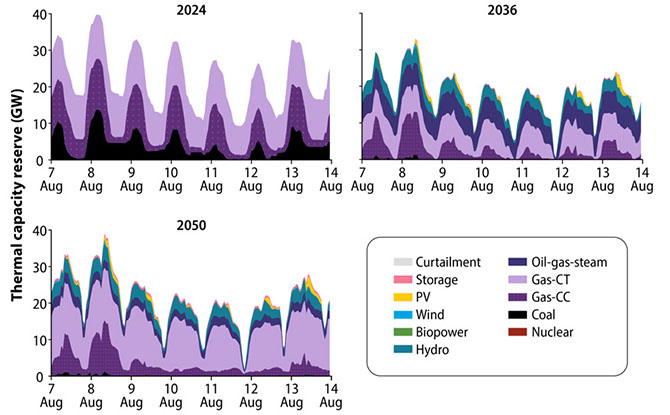Future System Scenarios Analysis
NREL develops future energy system scenarios and analyzes their cost, operability, and sustainability.
Power Systems and Electrification
We're evaluating the potential value of demand response—any modification of end-use electricity load operation for the purpose of providing grid services—to future bulk power systems. We're also analyzing how future electrification—replacing direct fossil-fuel use (e.g., propane, heating oil, gasoline) with electricity—could impact the U.S. power system and broader economy.
Electric System Flexibility and Storage
To balance electricity supply and demand with high levels of renewable generation, the electric system needs to be more flexible. This flexibility can come from a portfolio of supply- and demand-side options, including flexible conventional generation, grid storage, curtailment of renewable generation, new transmission, and more responsive loads. Our electric system flexibility and storage studies investigate the role of various flexibility options on large-scale renewable energy deployment.
High Renewable Generation
Jurisdictions are setting goals for as high as 100% renewable energy generation—how can they reach them technically, economically, and reliably? Our grid integration studies use state-of-the-art modeling and analysis to evaluate the impacts of higher renewable energy penetrations at local, regional, national, and continental scales.
Lithuania 100% Renewable Energy Study
The Lithuania 100% Renewable Energy Study is a collaborative research and development agreement between the Lithuanian Energy Agency and NREL to help Lithuania achieve a climate-neutral energy sector.
Impacts on Conventional Generators
With increasing penetration of renewable generation, conventional power plants may need to adjust their output and start up or shut down more frequently to accommodate the variability and uncertainty of these technologies. We're working to understand and quantify these impacts.
To learn more, see Inertia and the Power Grid: A Guide without the Spin and How Not To Short-Circuit the Clean Energy Transition.
Transmission Infrastructure
Large-scale deployment of renewable electricity generation will require additional transmission to connect renewable resources—which are widespread across the U.S. but regionally constrained—to load centers. Long-term transmission planning, based on potential growth in electric loads and generation resource expansion options, is critical to maintaining the flexibility required for a reliable and robust transmission system. Our analyses support transmission infrastructure planning and expansion to enable large-scale clean energy deployment.
Share













